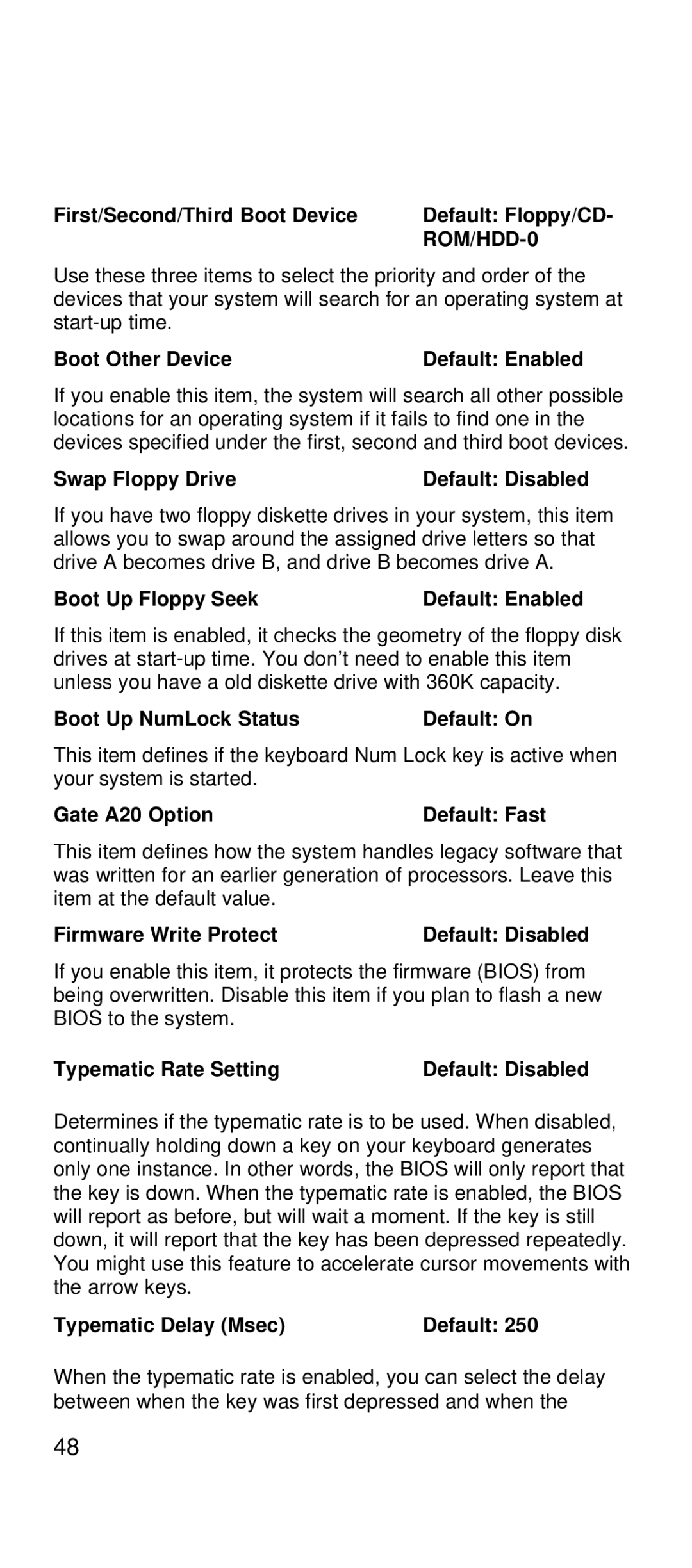First/Second/Third Boot Device | Default: Floppy/CD- |
|
|
Use these three items to select the priority and order of the devices that your system will search for an operating system at
Boot Other Device | Default: Enabled |
If you enable this item, the system will search all other possible locations for an operating system if it fails to find one in the devices specified under the first, second and third boot devices.
Swap Floppy Drive | Default: Disabled |
If you have two floppy diskette drives in your system, this item allows you to swap around the assigned drive letters so that drive A becomes drive B, and drive B becomes drive A.
Boot Up Floppy Seek | Default: Enabled |
If this item is enabled, it checks the geometry of the floppy disk drives at
Boot Up NumLock Status | Default: On |
This item defines if the keyboard Num Lock key is active when your system is started.
Gate A20 Option | Default: Fast |
This item defines how the system handles legacy software that was written for an earlier generation of processors. Leave this item at the default value.
Firmware Write Protect | Default: Disabled |
If you enable this item, it protects the firmware (BIOS) from being overwritten. Disable this item if you plan to flash a new BIOS to the system.
Typematic Rate Setting | Default: Disabled |
Determines if the typematic rate is to be used. When disabled, continually holding down a key on your keyboard generates only one instance. In other words, the BIOS will only report that the key is down. When the typematic rate is enabled, the BIOS will report as before, but will wait a moment. If the key is still down, it will report that the key has been depressed repeatedly. You might use this feature to accelerate cursor movements with the arrow keys.
Typematic Delay (Msec) | Default: 250 |
When the typematic rate is enabled, you can select the delay between when the key was first depressed and when the
48
